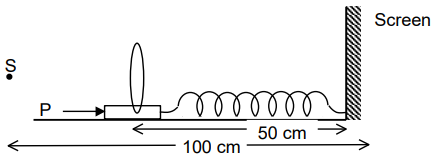-
Engineering and Architecture
Exams
Colleges
Predictors
Resources
-
Computer Application and IT
Quick Links
Colleges
-
Pharmacy
Colleges
Resources
-
Hospitality and Tourism
Colleges
Resources
Diploma Colleges
-
Competition
Other Exams
Resources
-
School
Exams
Top Schools
Products & Resources
-
Study Abroad
Top Countries
Resources
-
Arts, Commerce & Sciences
Colleges
Upcoming Events
Resources
-
Management and Business Administration
Colleges & Courses
Predictors
-
Learn
Law Preparation
MBA Preparation
Engineering Preparation
Medical Preparation
-
Online Courses and Certifications
Top Streams
Specializations
- Digital Marketing Certification Courses
- Cyber Security Certification Courses
- Artificial Intelligence Certification Courses
- Business Analytics Certification Courses
- Data Science Certification Courses
- Cloud Computing Certification Courses
- Machine Learning Certification Courses
- View All Certification Courses
Resources
-
Medicine and Allied Sciences
Colleges
Predictors
Resources
-
Law
Resources
Colleges
-
Animation and Design
Exams
Predictors & Articles
Colleges
Resources
-
Media, Mass Communication and Journalism
Colleges
Resources
-
Finance & Accounts
Top Courses & Careers
Colleges
Get Answers to all your Questions


- #Physics
- #National Eligilibility Cum Entrance Test
- #Optics
- #Medical
- #National Eligibility Cum Entrance Test
- #Class 12
A point object is located at a distance of 100 m from a screen. A lens of focal length 23 cm mounted on a movable frictionless stand is kept between the source and the screen. The stand is attached to a spring of natural length 50cm and spring constant 800 N/m as shown. Mass of the stand with lens is 2 kg. How much impulse P should be imparted to the stand so that a real image of the object is formed on the screen after a fixed time gap? (Neglect width of the stand).

Answers (1)

Let the distance of the lens from the object be when a real image is formed on the screen. Then
solving, we get .
Now, if the lens performs SHM and real image is formed after a fixed time gap then this time gap must be one fourth of the time period.
Phase difference between the two positions of real image must be
. As the two positions are symmetrically located about the origin, phase difference of any of these positions from origin must be
.
To achieve this velocity at the mean position
Required impulse
.
NEET 2024 Most scoring concepts
- Just Study 32% of the NEET syllabus and Score up to 100% marks
Similar Questions
Trending Articles/News
Latest Question
- (i) By the transfer of electrons, illustrate the formation of bond in magnesium chloride and identify the ions present in this compound. (ii) Ionic compounds are solids. Give reasons.
- A charge of 6 µC is given to a hollow metallic sphere of radius 0.2 m. Find the potential at (1) the surface and (ii) the centre of the sphere.


